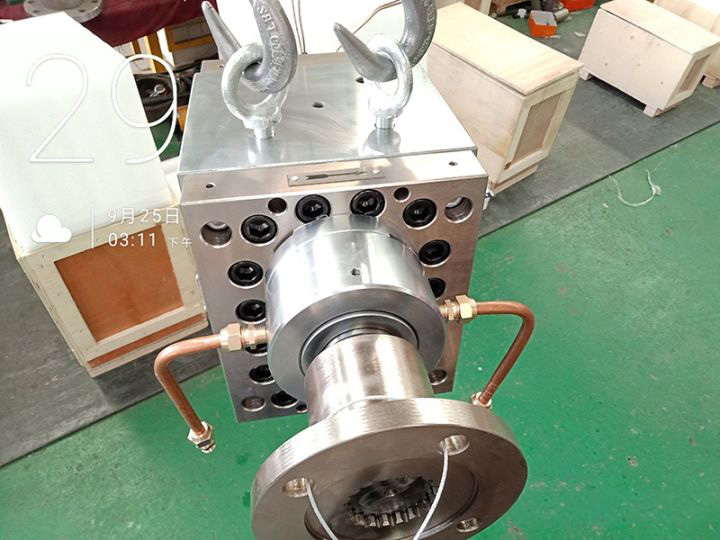Working principle of chemical fiber melt metering pump
The melt metering pump is a positive displacement conveying device, which mainly works by relying on the change in working volume caused by the meshing of the main and driven gears to transport the melt.

The melt metering pump mainly consists of a pump casing, driving gear, driven gear, sliding bearings, front and rear end plates, and packing seals. It includes the feeding area, conveying area, and discharging area, which are composed of the tooth profiles of two gears, the pump body, and the side cover plate. During operation, when the gear rotates in the specified direction, the molten metal enters the grooves of the two gears in the feeding area. As the gears rotate, the melt is brought into the feeding area from both sides, and then when the gears mesh again, it is squeezed out of the discharge area and pressed into the outlet pipeline. As long as the pump shaft rotates, the gear will press the melt towards the outlet side, so the pump outlet can reach a very high pressure, and there are no high requirements for the inlet flow rate and pressure, and even the inlet vacuum suction can be achieved.

The melt metering pump also has metering and boosting functions. Every time the gear rotates, the discharge amount is constant, achieving continuous discharge and metering. At the same time, the gears in the pump act like pistons in the cylinder barrel, exerting a squeezing effect on the molten material in the discharge area, achieving a pressure boosting function. The gear also acts as a rotating barrier, effectively isolating the impact of pressure and flow fluctuations in the feed area on the discharge area.
Email: info@battemachinery.com
WhatsApp: +86 158 38331071